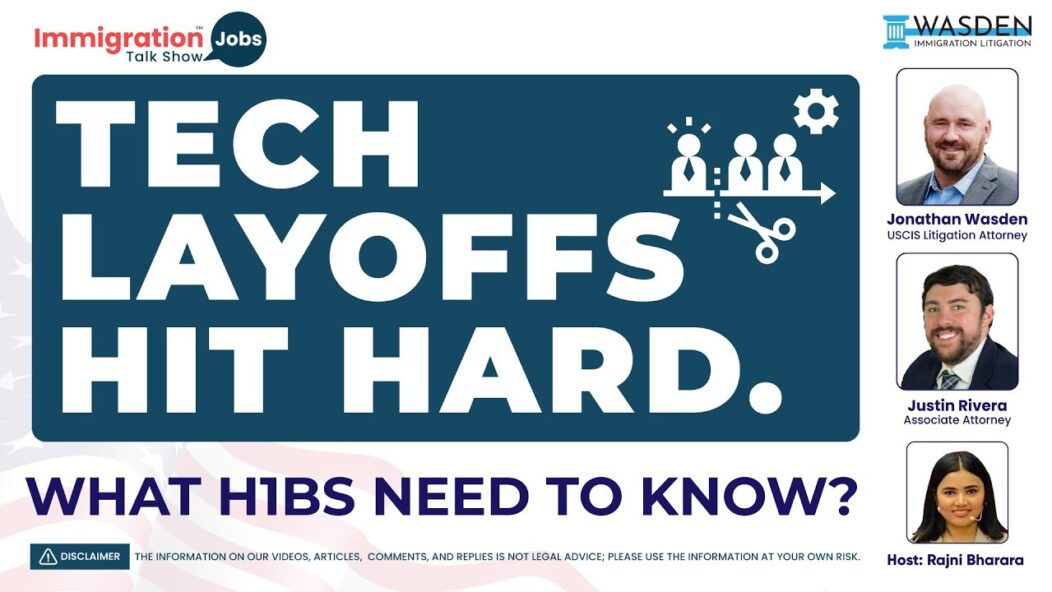Switching from a work visa to an Employment Authorization Document (EAD) while waiting for your I-485 application can be a smart move. This guide will help you understand how to make this change, what it means for your status, and what steps you need to take. It’s important to know the rules and benefits of using an EAD instead of a work visa, especially if you want to stay in the U.S. more easily while your green card application is pending.
Key Takeaways
- You can apply for an EAD when your I-485 is pending, allowing you to work without a work visa.
- Using an EAD means you might lose your current visa status, so think carefully before making the switch.
- The process for applying for an EAD and I-485 has specific steps you need to follow.
- Changing jobs while on an EAD can be tricky, so it’s best to get legal advice first.
- If your I-485 is denied, using an EAD may affect your ability to stay in the U.S.
Understanding the Transition from Work Visa to EAD
When you are in the process of adjusting your status to a green card, you may want to switch from a work visa to an Employment Authorization Document (EAD). This transition can be beneficial for many reasons. The EAD allows you to work without being tied to a specific employer.
Eligibility Criteria for EAD
To qualify for an EAD based on a pending I-485 application, you must meet certain criteria:
- You must have a pending I-485 application.
- Your I-140 petition should ideally be approved.
- You should not have any disqualifying factors that could affect your application.
Key Differences Between Work Visa and EAD
Here are some important differences:
FeatureWork VisaEADTied to EmployerYesNoRenewal ProcessOften complexSimplerDuration of ValidityLimited by visa termsTypically 1-2 years
Benefits of Switching to EAD
Switching to an EAD can offer several advantages:
- Flexibility: You can work for any employer.
- Independence: You are not restricted by your visa conditions.
- Ease of Transition: You can continue working while your green card application is processed.
In summary, understanding the transition from a work visa to an EAD is crucial for those looking to adjust their status. This change can provide more freedom and ease during the green card process, making it a valuable option for many applicants.
Switching from a work visa to an EAD can simplify your employment situation, especially if your I-140 is approved and there are no issues with your I-485 application.
Application Process for I-485 and EAD
Steps to File I-485 Application
- Complete Form I-485: This is the main form to apply for adjustment of status.
- Gather Required Documents: Include proof of eligibility, such as your current visa and any supporting documents.
- Submit Your Application: Send your completed form and documents to the appropriate USCIS address.
How to Apply for EAD
- File Form I-765: This form is specifically for applying for an Employment Authorization Document (EAD).
- Include Necessary Documents: Attach copies of your I-485 receipt notice and any other required documents.
- Pay the Fee: Ensure you include the correct fee for processing your EAD application.
Processing Times and Expectations
Application TypeAverage Processing TimeI-4858-14 monthsEAD3-6 months
Remember: Processing times can vary based on your specific case and USCIS workload. Always check for the latest updates.
Switching from a work visa to an EAD can be a significant step. It’s essential to understand the implications of your choices, especially regarding your current visa status. If you have questions, consider reaching out to an immigration attorney for guidance.
Impact on Current Visa Status
Maintaining Non-Immigrant Status
When you apply for an EAD based on a pending I-485 application, it’s crucial to understand how this affects your current visa status. Using an EAD can lead to losing your non-immigrant status. For example, if you are on an H-1B or F-1 visa and you start using your EAD, you will be considered in I-485 pending status, which means you are no longer in your original visa status.
Consequences of Using EAD
Here are some important points to consider:
- If your I-485 application is denied, you must leave the U.S. if you used your EAD.
- If you do not use your EAD, you can keep your current visa status, even if your I-485 is denied.
- Switching to EAD can limit your options if you need to revert to your work visa.
Reverting to Work Visa if I-485 is Denied
If your I-485 application is denied, reverting back to your work visa can be complicated. Here’s what you need to know:
- Consult an immigration attorney to understand your options.
- You may need to reapply for your original visa status.
- If you used your EAD, you might not be able to return to your previous visa status.
It’s essential to weigh the risks before deciding to use your EAD. Always consult with a qualified immigration attorney to navigate these complexities effectively.
In summary, transitioning from a work visa to an EAD based on a pending I-485 application can significantly impact your current visa status. Understanding these implications is vital for making informed decisions during this process.
Legal Considerations and Risks
Consulting with an Immigration Attorney
When considering a switch from a work visa to an EAD, consulting with an immigration attorney is crucial. They can help you understand the legal implications and ensure you meet all requirements. Here are some reasons to seek legal advice:
- Clarification on eligibility for EAD
- Guidance on maintaining your current visa status
- Assistance with any potential issues during the application process
Potential Issues with I-140 Petition
Your I-140 petition is a key part of your green card process. If you switch to an EAD, be aware of these potential issues:
- Delays in processing your I-140
- Changes in job roles that may affect your petition
- Risk of denial if the job offer is no longer valid
Legal Implications of Job Changes During I-485 Processing
Changing jobs while your I-485 is pending can have serious consequences. Here are some important points to consider:
- You may need to file a new I-485 if your job changes significantly.
- Job changes can impact your green card eligibility.
- Always inform your attorney about any job changes to avoid complications.
Switching from a work visa to an EAD can provide flexibility, but it also comes with risks that must be managed carefully. Understanding these legal considerations is essential for a smooth transition.
Practical Tips for a Smooth Transition
Communicating with Your Employer
- Be open and honest about your plans to switch to an EAD.
- Discuss how this change may affect your current role and responsibilities.
- Ensure your employer understands the legal aspects of your transition.
Timing Your Application
- File your I-485 as soon as you meet the eligibility criteria.
- Apply for your EAD promptly after filing the I-485 to avoid gaps in work authorization.
- Monitor processing times to plan your job transition effectively.
Preparing for Possible Outcomes
- Have a backup plan in case your I-485 is denied.
- Keep all documentation organized, including your EAD and I-485 receipts.
- Consult with an immigration attorney to understand your options.
Remember, transitioning from a work visa to an EAD can be complex. Act quickly to ensure you maintain your employment status and avoid any legal issues.
Common Pitfalls to Avoid
While many have succeeded, some faced challenges. Here are common pitfalls:
- Not filing the EAD application on time: Delays can lead to loss of work authorization.
- Changing jobs without notifying USCIS: This can complicate the I-485 process.
- Ignoring the expiration date of the EAD: Always keep track of your EAD’s validity.
Lessons Learned from Denied Applications
Some applications for EAD based on a pending I-485 have been denied. Here are lessons learned:
- Ensure all documents are complete: Missing paperwork can lead to denials.
- Consult with an immigration attorney: Professional guidance can help avoid mistakes.
- Stay informed about immigration laws: Changes can affect your application status.
Transitioning from a work visa to an EAD can be a smooth process if you are well-prepared and informed.
In summary, while there are success stories, it’s crucial to be aware of potential pitfalls and learn from past experiences to ensure a successful transition.
Frequently Asked Questions About EAD and I-485
Common Concerns Addressed
When transitioning from a work visa to an EAD based on a pending I-485 application, many questions arise. Here are some common concerns:
- What happens to my current visa status? If you use your EAD, you may lose your non-immigrant status.
- Can I work for any employer? Yes, an EAD allows you to work for any U.S. employer.
- What if my I-485 is denied? If your I-485 is denied and you used your EAD, you may have to leave the U.S.
Clarifications on Legal Terms
Understanding the legal terms can be confusing. Here are some clarifications:
- EAD (Employment Authorization Document): A document that allows you to work legally in the U.S.
- I-485 (Application to Adjust Status): A form to apply for permanent residency.
- Non-Immigrant Status: A temporary visa status that allows you to stay in the U.S. for a specific purpose.
Remember: Always consult with an immigration attorney before making decisions regarding your visa status. This can help you avoid potential pitfalls and ensure a smoother transition in your green card journey. Stay informed about the latest updates on the I-485 application process.
If you have questions about EAD and I-485, you’re not alone! Many people face similar challenges. For more information and expert help, visit our website today! We’re here to guide you through the immigration process with ease.
Conclusion
Switching from a work visa to an Employment Authorization Document (EAD) while your I-485 application is waiting can be tricky. Although having an EAD gives you more options, it also comes with some risks. Immigration rules can be complicated, and your personal situation can make things even harder. That’s why it’s smart to talk to an immigration lawyer who can help you understand your choices. They can guide you so that changing jobs won’t hurt your chances of getting a green card. Always think carefully about each step you take in your journey to permanent residency. Making informed choices with expert help can lead to a smoother process and a better chance of success.
Frequently Asked Questions About EAD and I-485
What is an EAD and why is it important?
An EAD, or Employment Authorization Document, is a card that allows you to work in the U.S. without needing a work visa. It’s important because it gives you the freedom to work while waiting for your green card.
Can I work for any employer with an EAD?
Yes, once you have your EAD, you can work for any U.S. employer. You are not limited to the employer who sponsored your visa.
What happens if my I-485 application is denied?
If your I-485 application is denied and you used your EAD, you may have to leave the U.S. However, if you didn’t use the EAD, you may still keep your work visa and stay.
How long does it take to get an EAD after applying?
It usually takes about 10 months to receive your EAD after you apply, but this can vary.
Do I need to inform my employer that I am using an EAD?
Yes, it’s a good idea to let your employer know you are using an EAD for work. They may need to update their records.
Can I change jobs while my I-485 is pending?
Yes, you can change jobs while your I-485 is pending, especially if you have an EAD. Just make sure your new job is similar to the one in your original application.
Disclaimer:
The information provided in this article is for general informational purposes only and does not constitute legal advice. While we strive to ensure the content is accurate and up-to-date, it is not a substitute for professional legal consultation. Immigration laws and regulations are subject to change, and their application can vary based on specific circumstances. We recommend scheduling a consultation with us to obtain advice tailored to your individual situation. The authors and publishers of this article are not responsible for any actions taken based on the information provided herein.
How useful was this post?
Click on a star to rate it!









